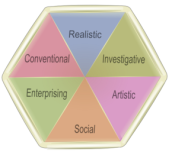Guidance Welcome!
My name is Emma Brevik and I am excited to be the new 7th-9th grade counselor and to be joining the Lincoln Junior/Senior High School Family. I grew up near Portage, Wisconsin, but have been living in the Twin Cities area for 7 years as I completed my Bachelor’s and Master’s Degrees at University of Wisconsin – River Falls.
This will be my first year working as a school counselor and I feel so lucky to be able to share this experience with the students at LHS. I am passionate about giving them the tools they need to grow to be amazing human beings. I look forward to interacting with the students throughout the year during class lessons, individual meetings, and/or group sessions. Please don’t hesitate to reach out to me with any questions, concerns, or comments you might have.
Contact: Emma Brevik
Cyberbullying: Don’t Write It. Don’t Forward It.Students today have unprecedented options for communicating with their peers. Unfortunately, not all of this communication is positive.
Both boys and girls sometimes bully online and just as in face-to-face bullying, tend to do so in different ways. Boys more commonly bully by sending messages of a sexual nature or by threatening to fight or hurt someone. Girls more often bully by spreading rumors and by sending messages that make fun of someone or exclude others. They also tell secrets.
|
Cyberbullying can be a complicated issue, especially for adults who are not as familiar with using the Internet, instant messenger, or chat rooms as kids. But like more typical forms of bullying, it can be prevented when kids know how to protect themselves and parents are available to help.
For more information on cyberbullying, visit cyberbullying.us and Wired Safety.
(From National Crime Prevention Council Website)
Cyberbullying Podcast “The Basic Facts on Cyberbullying”
Cyberbullying Podcast “Taking Action”
Cyberbullying Podcast “Creating Change”
Cyberbullying Podcast “Students Speak Out”
Cyberbullying Video
Guide to Cyberbullying Laws
Outside Resources
 |
Lake City Resources Lake City Police Department (651) 345-3391 Wabasha County Sheriff’s Dept. (651)-565-3361 Goodhue County Sheriff’s Dept. (651)267-2600 City of Lake City Web page http://www.lakecity.org/ Wabasha County Resources Social Services (651) 565-3351 Parent Support Outreach (651) 565-3029 Emergency Shelter or transportation (651) 565-3351 W.I.C. (Women, infants, and children) (651) 565-5200 Wabasha County Domestic Violence (651) 565-4112 Medical Assistance/Minnesota Care – Wabasha Co. (651) 565-3351 Wabasha County Online http://www.co.wabasha.mn.us/ Goodhue County Resources Social Services (651) 385-3232 Emergency Shelter or transportation (800) 950-2142 Goodhue County Domestic Violence (651) 385-8600 Goodhue County Online http://www.co.goodhue.mn.us/ Minnesota Resources MN Guide for Immigrants http://womans-shelter.org/booklet.html Minnesota Care www.health.state.mn.us (downloadable forms) Telephone Hook-up Assistance –http://www.puc.state.mn.us/consumer/assist/tsd1.htm Child and Family Counseling Covered Bridge Family Resources Hiawatha Valley Mental Health Center Fairview Red Wing Behavioral Health Comprehensive Behavioral Health Services, P.A. Whispering Willow Center for Grieving Children, Youth & Families Joan Ward Community Resources Three River’s Community Action, Inc. Fuel assistance to qualifying households Child Care Assistance (651) 565-3351 Rochester’s Crisis Nursery (507) 287-1499 Food Lake City Food Shelf (651) 345-5888 W.I.C. (651) 565-5200 Wabasha County Food Stamp Office (651) 565-3351 Free or Reduced Lunch Program (651) 345-4553 Abuse Shelter/Counseling Domestic violence Line – 24 Hour Line (800) 438-6439 Wabasha County Domestic Violence (651) 565-4112 Goodhue County Domestic Violence (651) 385-8600 Goodhue Wabasha Sexual Assault Services -Crisis and support line (800) 519-6690 -Support Groups Referrals -Red Wing (651) 388-9360 ext. 13 Suicide National Adolescent Suicide Hotline (800) 621-4000 Public Health Wabasha County Public Health (651) 565-5200 Goodhue County Public Health (651) 385-6100 Drug and Alcohol Abuse Addiction Referral Network (800) 577-4393 Lake City AA Meetings Lake City Al-Anon Rochester Alateen Wenden Recovery Services Inc (651) 385-0600 Recovery Group The Trevor Helpline (for gay and lesbian youth) |
|
Internet Links of Interest | ||
|
| ||
A Planning List for Parents and Ninth Graders
It may seem early to start thinking about getting your child ready for college, but it really isn’t- important groundwork should take place in ninth and tenth grade. Here’s a list to help you make sure our child is on the right track:
____ 1. Create a four-year high school plan. Once your child is settled into ninth grade, introduce the idea of preparing an overall plan for high school that relates to his or her goals.
- Make sure you and your child know what high school courses are required by colleges, and that your child’s ninth-grade courses are on the right track.
- Map out when these courses should be taken
- Familiarize yourself with the various levels of courses offered by your child’s school.
____ 2. Start your child thinking about careers. Encourage your child to develop a tentative career goal. Of course, it will change often- but it’s the thought process that counts.
- Help your child identify interest-likes and dislikes- not just in academics, but in all areas. This will help your child focus on goals.
- Encourage your child to discuss career options with others, such as the school counselor, teachers, recent college graduates who are working, professionals in the community, etc.
____ 3. Suggest Extracurricular Activities–Encourage your child to actively take part in a sport, school club, music or drama group, or community volunteer activity.
- Remember that colleges would rather wee real involvement in one activity than a loose connection to several activities.
- If your child may want to play sports in college, research the National College Athletic Association (NCAA) eligibility requirements. The NCAA requires completion of certain core courses; you can find specifics at www.ncaaclearinghouse.net.
___ 4. Meet with the school counselor: The school counselor knows how to help your child get the most out of high school. Make sure your child has an opportunity during the school year to discuss post-high school plans with the school counselor.
___ 5. Save for College. It’s still not too late to start a college savings plan, if you haven’t already. Every little bit helps!
- Investigate state financial aid programs and 529 plans.
___ 6. Obtain a social security number for your child if you don’t already have one.
This is often required for applications, testing, scholarships, and other opportunities.



 a parent resource library available in the Principal’s office. We have a variety of pamphlet’s and books available. Please check out our library the next time you visit our school.
a parent resource library available in the Principal’s office. We have a variety of pamphlet’s and books available. Please check out our library the next time you visit our school.